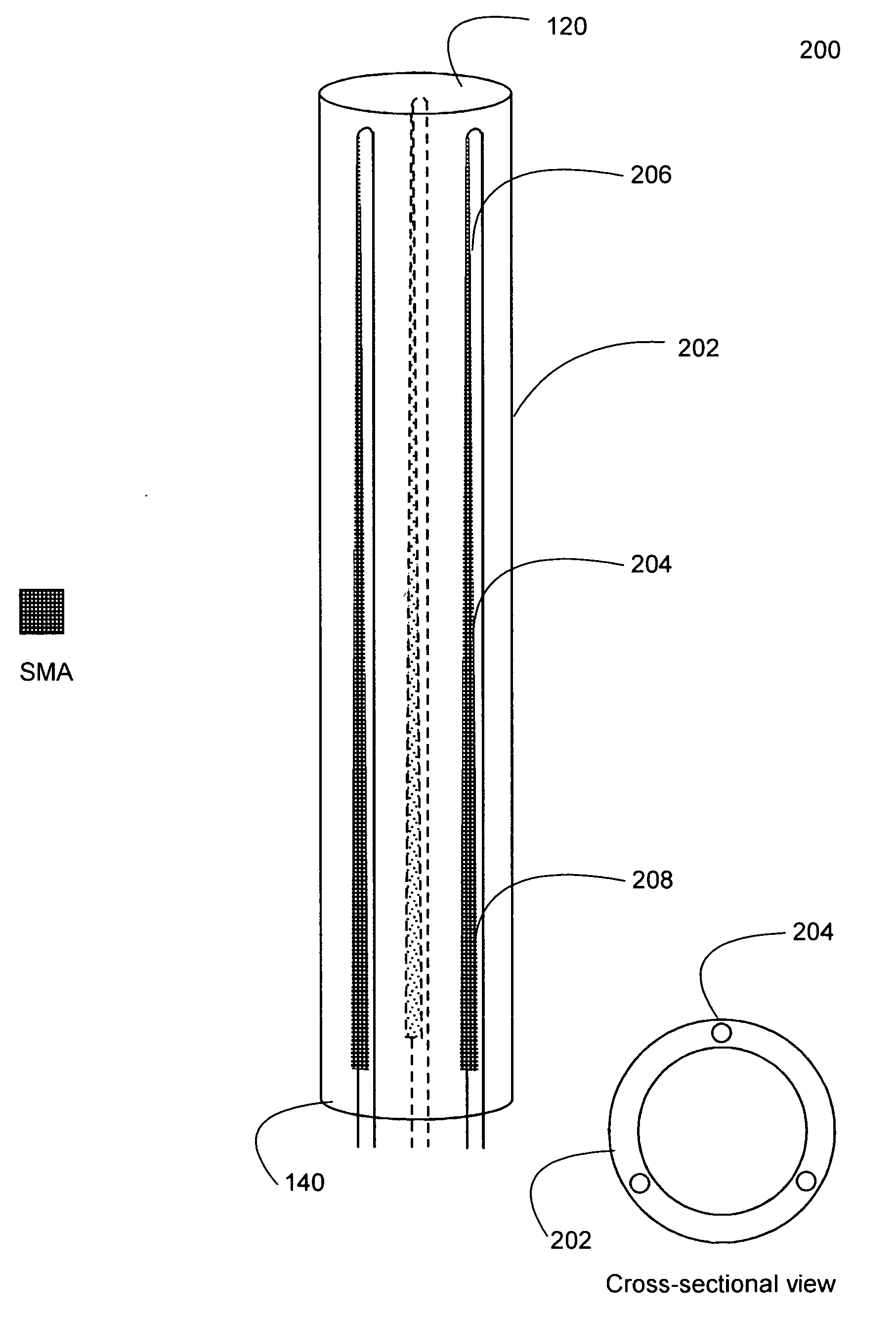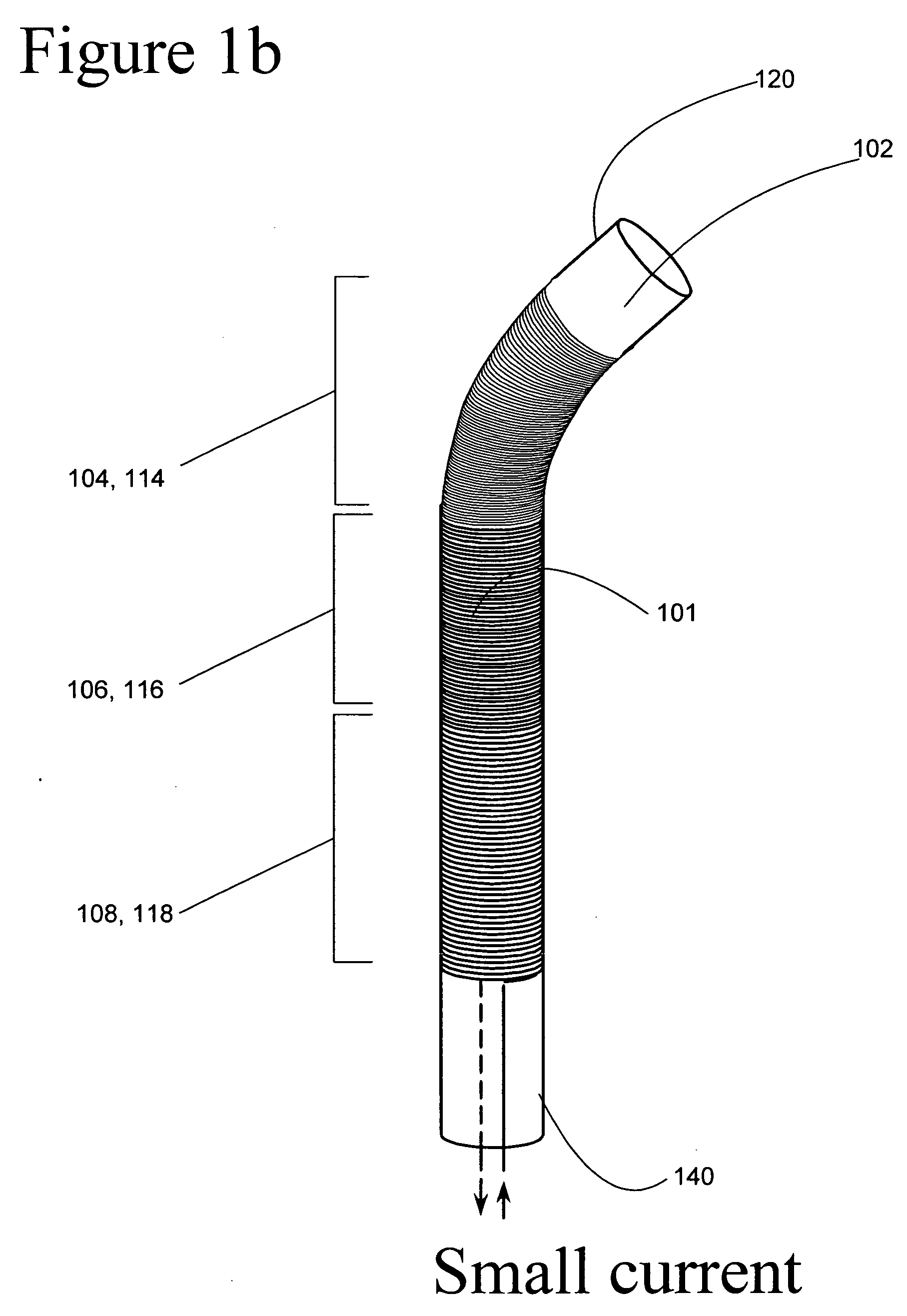Steerable devices
a technology of steerable catheters and catheters, which is applied in the direction of medical devices, guide wires, other medical devices, etc., can solve the problems of limiting the overall usefulness of the catheter, difficulty in navigating into the bifurcation damage to the distal vessel, so as to facilitate the catheterization of the blood vessel, improve the safety of the steerable catheter, and improve the versatility
- Summary
- Abstract
- Description
- Claims
- Application Information
AI Technical Summary
Benefits of technology
Problems solved by technology
Method used
Image
Examples
Embodiment Construction
[0015] The present invention provides steerable devices, which may be slender devices, with graded or gradual control capability. Generally, the steerable devices have a proximal end and a distal end that includes at least one structure composed of a material that exhibits shape memory characteristics, such as a shape memory alloy (“SMA”) or a shape memory polymer (“SMP”), which has the ability to return to a predetermined shape upon application of energy, such as heat, and a variable heating element or any other means for variably heating the structure. The shape memory structure is generally incorporated into the device and is configured so that graded bending of the structure may be achieved by variably heating the shape memory material, along some or all of the length of the structure, either gradually or in steps, to one or more transformation temperatures associated with the shape memory material or materials.
[0016] Although the present invention may be described by way of ex...
PUM
 Login to View More
Login to View More Abstract
Description
Claims
Application Information
 Login to View More
Login to View More - R&D
- Intellectual Property
- Life Sciences
- Materials
- Tech Scout
- Unparalleled Data Quality
- Higher Quality Content
- 60% Fewer Hallucinations
Browse by: Latest US Patents, China's latest patents, Technical Efficacy Thesaurus, Application Domain, Technology Topic, Popular Technical Reports.
© 2025 PatSnap. All rights reserved.Legal|Privacy policy|Modern Slavery Act Transparency Statement|Sitemap|About US| Contact US: help@patsnap.com



